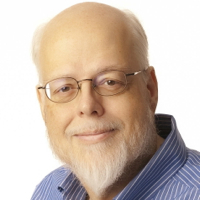Channel 4 has been reliving the Dahmer case in a series on the 20th anniversary of the arrest of Milwaukee's most notorious murderer, Jeffrey Dahmer.
I haven't thought much about the story, which I worked on as a general assignment reporter for the old Milwaukee Journal, before it merged with the Sentinel. I recall being among only three reporters – The Sentinel's Crocker Stephenson and Jeff Fleming, then reporting for Channel 4 – who wrangled a glimpse inside Dahmer's apartment.
All the nasty parts were gone the morning after the police first descended on the apartment. But I remember the framed black-and-white posters of nude male torsos on the walls. They showed no faces, just bodies.
As part of a team of reporters who were focused strictly on this huge story, I spent plenty of time outside Dahmer's apartment building, just west of downtown, watching and reporting on the passing parade.
The assignment provided plenty of bizarre memories: a guy who pulled animal bones from a dumpster behind a neighboring Asian food business, acting as if they they were the remains of Dahmer's victims; a neighborhood preacher leading a group to the building to exorcise it of evil spirits; a wannabe politician who tried to use the site as a backdrop to announce his aldermanic candidacy.
But as a media columnist, naturally, my thoughts turn to how different the media was in those days.
There was no Internet, although we handled plenty of telephone calls in the newsroom from people who'd heard bizarre rumors about Dahmer and all the other murders he was supposedly involved in.
What an inefficient way to spread rumors.
There was just one news channel on cable, CNN. I got to know the reporters covering the shocking story and was interviewed a few times on the air. The interviews got me a call from a producer on "Larry King Live," and I did a show on the murders.
That led to a call from a producer on Phil Donahue's syndicated show. The panel included a couple relatives of Dahmer's victims, a guy who escaped from Dahmer and somebody whose face was made up to obscure his identity. He claimed to have been Dahmer's "lover," and smelled like a phony.
Returning to the newsroom, I took grief from my friends and co-workers because Donahue referred to me as "Timmy."
Back in Milwaukee, I was interviewed by a Japanese television crew, with the reporter asking me if it was true that Dahmer's cannibalism was an example of how bad poverty was in the U.S.
No, I told him. Dahmer wasn't even poor.
I did a radio interview with what turned out to be a conservative religious radio station that contended that Dahmer's crimes had to do with the sin of homosexuality.
I quickly ended our live conversation.
It was a fascinating education in the power of the electronic media (my Donahue appearance led to a number of people coming up to me in places like the grocery story asking, "Didn't I see you on TV?").
The Larry King appearance led to a number of calls from nuts from around the country, and one entertainment lawyer who wanted to represent me. (I didn't take him up on the offer.)
As I said earlier, I was just part of a team covering the Dahmer story as it broke. I never considered it my best reporting and my writing was usually part of other stories.
But somehow, I slipped into that media world, providing me plenty of insight that would help when I started writing about the subject three years later.
I've posted it before, but here's a clip from my Larry King appearance. It seems to fit particularly well here:
One more self-referential bit: Channel 4 general manager Steve Wexler says my Wednesday column on TV stations using labels on weather stories was the inspiration for a newly labeled feature called "Sweaty City."
Here's he sentence containing the term: "That, of course, doesn't stop TV news from focusing on a sweaty city and how it's dealing with the 90-plus temperatures, and all that mugginess."
Last time I saw, Janesville had won the "Sweaty City" title by hitting 100 degrees.
Tim Cuprisin is the media columnist for OnMilwaukee.com. He's been a journalist for 30 years, starting in 1979 as a police reporter at the old City News Bureau of Chicago, a legendary wire service that's the reputed source of the journalistic maxim "if your mother says she loves you, check it out." He spent a couple years in the mean streets of his native Chicago, and then moved on to the Green Bay Press-Gazette and USA Today, before coming to the Milwaukee Journal in 1986.
A general assignment reporter, Cuprisin traveled Eastern Europe on several projects, starting with a look at Poland after five years of martial law, and a tour of six countries in the region after the Berlin Wall opened and Communism fell. He spent six weeks traversing the lands of the former Yugoslavia in 1994, linking Milwaukee Serbs, Croats and Bosnians with their war-torn homeland.
In the fall of 1994, a lifetime of serious television viewing earned him a daily column in the Milwaukee Journal (and, later the Journal Sentinel) focusing on TV and radio. For 15 years, he has chronicled the changes rocking broadcasting, both nationally and in Milwaukee, an effort he continues at OnMilwaukee.com.
When he's not watching TV, Cuprisin enjoys tending to his vegetable garden in the backyard of his home in Whitefish Bay, cooking and traveling.



